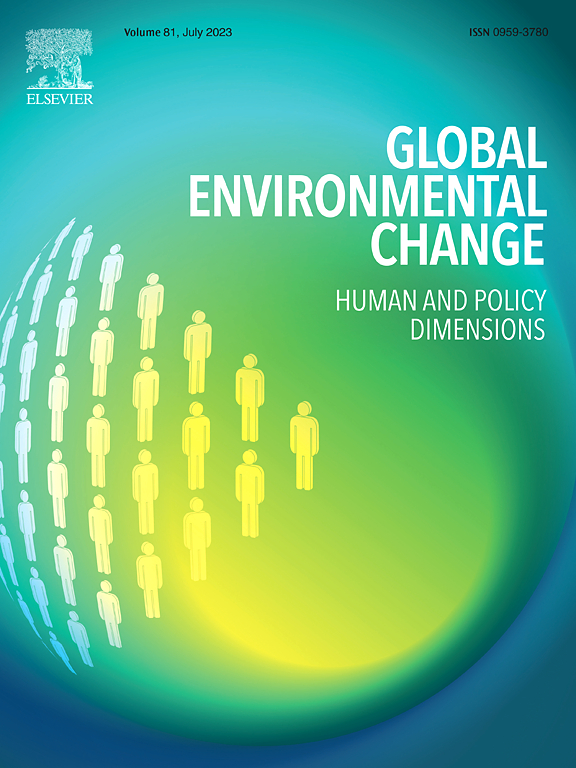超载、潜在的空气污染和粮食短缺
IF 9.1
1区 环境科学与生态学
Q1 ENVIRONMENTAL SCIENCES
引用次数: 0
摘要
实现1.5°C的目标将导致暂时的超调,峰值温度可能超过1.7°C,然后在本世纪末下降。本研究考察了不同的经济增长模式、能源转型和非二氧化碳减排战略如何影响这一轨迹。我们的模拟显示,要实现这一目标,需要到2100年将累计二氧化碳排放量限制在220-370亿吨二氧化碳,并在2060年左右达到530-650亿吨二氧化碳的峰值。成功的关键是到2060年过渡到净零二氧化碳,并实施二氧化碳去除(CDR)技术。有效减少CH4和N2O对于最小化额外变暖至关重要。显著的共同效益包括改善空气质量,二氧化硫和氮氧化物排放量减少60 - 80%,促进公众健康。然而,激进的气候政策和由此导致的高化肥价格可能会使粮食作物产量减少16.8%,这突出表明需要将气候和农业战略结合起来,以平衡减排与粮食安全,实现长期气候和可持续性目标。部署具有低土地足迹的CDR技术,例如直接空气捕获,可以帮助减轻基于陆地的权衡。本文章由计算机程序翻译,如有差异,请以英文原文为准。
Overshoot, potential air pollution co-benefits and food shortages
Achieving the 1.5°C target will entail a temporary overshoot, with peak temperatures potentially exceeding 1.7°C before declining towards the end of the century. This study examines how different economic growth patterns, energy transitions, and non-CO2 mitigation strategies influence this trajectory. Our simulations reveal that achieving this target requires confining cumulative CO2 emissions to 220–370 GtCO2 by 2100, with a peak around 2060 of 530–650 GtCO2. Key to success is the transition to net-zero CO2 by 2060 and the implementation of Carbon Dioxide Removal (CDR) technologies. Effective reductions in CH4 and N2O are vital for minimizing additional warming. Significant co-benefits include improved air quality, with SO2 and NOx emissions decreasing by 60–80 %, enhancing public health. However, aggressive climate policies and resulting high fertilizer prices may reduce food crop yields by up to 16.8 %, highlighting the need to integrate climate and agricultural strategies to balance emission reductions with food security and achieve long-term climate and sustainability goals. The deployment of CDR technologies with low land footprint, such as direct air capture, could help alleviate land-based trade-offs.
求助全文
通过发布文献求助,成功后即可免费获取论文全文。
去求助
来源期刊

Global Environmental Change
环境科学-环境科学
CiteScore
18.20
自引率
2.20%
发文量
146
审稿时长
12 months
期刊介绍:
Global Environmental Change is a prestigious international journal that publishes articles of high quality, both theoretically and empirically rigorous. The journal aims to contribute to the understanding of global environmental change from the perspectives of human and policy dimensions. Specifically, it considers global environmental change as the result of processes occurring at the local level, but with wide-ranging impacts on various spatial, temporal, and socio-political scales.
In terms of content, the journal seeks articles with a strong social science component. This includes research that examines the societal drivers and consequences of environmental change, as well as social and policy processes that aim to address these challenges. While the journal covers a broad range of topics, including biodiversity and ecosystem services, climate, coasts, food systems, land use and land cover, oceans, urban areas, and water resources, it also welcomes contributions that investigate the drivers, consequences, and management of other areas affected by environmental change.
Overall, Global Environmental Change encourages research that deepens our understanding of the complex interactions between human activities and the environment, with the goal of informing policy and decision-making.
 求助内容:
求助内容: 应助结果提醒方式:
应助结果提醒方式:


